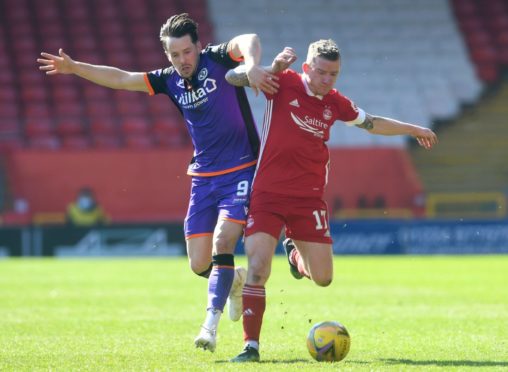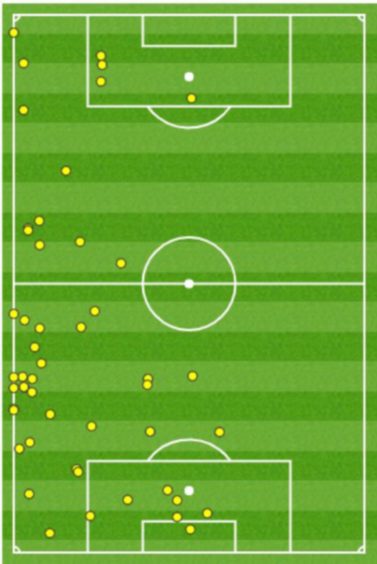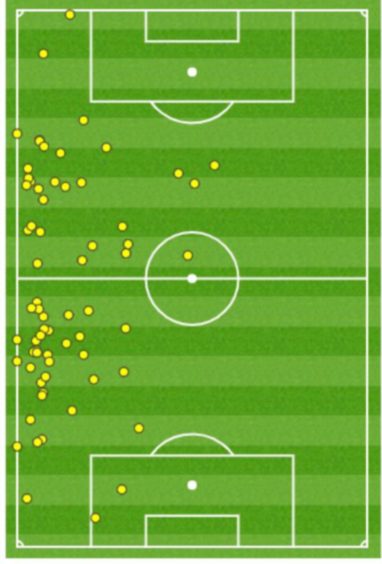The dust is still settling from Aberdeen’s Scottish Cup mauling by Dundee United and no doubt new Dons boss Stephen Glass has spent the last couple of days poring over what went wrong and more importantly how to fix it.
Following former manager Derek McInnes’ departure from Pittodrie interim boss Paul Sheerin was quick to throw Jack MacKenzie into first team action at left back.
It was a bold decision thrusting a raw, young talent into the first team at a time when confidence was low but MacKenzie, while clearly learning his trade, has shown encouraging signs.
But the decision to put MacKenzie in the side had a far more important knock-on effect of allowing Jonny Hayes to push forward into the position which earned him a move to Celtic Park in 2017 – as an attacking threat.
Since MacKenzie’s debut against Dundee United in March he has also started the league match against St Johnstone, which the Dons won 1-0 thanks to a Hayes goal with Hayes forced to revert to a defensive role in the three Scottish Cup ties against Dumbarton, Livingston and Dundee United due to MacKenzie being cup-tied following his involvement for Forfar earlier in the season.
Hayes also featured in defence as Glass opted for experience against Celtic at Pittodrie last week but it is clear the former Caley Thistle and Hoops player’s attacking instincts make him an important forward threat.
The issue is whether he can provide both from a deeper role in a back four.
That same desire to push forward gave the Dons a valuable threat against Celtic in the 1-1 draw but it was cruelly exposed by an excellent United in Sunday’s 3-0 quarter-final win.
The Opta statistics show Hayes was more involved against United than Celtic as an attacking threat.
Hayes made more than double the number of passes, 56 compared to 25, against United than he did against his former club Celtic but his accuracy was only 11% better. Crucially he made no tackles against United and the reasons for that can be shown in his touch maps from the two games at Pittodrie last week.
To no surprise, Hayes’ play was down Aberdeen’s left hand side but his touches of the ball were noticeably less in and around his own penalty area against United than they were against Celtic.
You could make the case that happened because Celtic had more of the ball against Aberdeen than United did but in terms of pressure around the Dons box it was United who showed so much more of an attacking threat against an Aberdeen defence which looked jaded and lacking in concentration too often on Sunday.
While Leigh Griffiths came off the bench to rescue a point for Celtic in the dying seconds at Pittodrie in the league United were three goals to the goal before the hour mark in the cup game just days later.
United exploited the space in behind Hayes for the opener as Andy Considine was forced to come across and try to prevent Marc McNulty from breaking the deadlock. His efforts were in vain.
The visitors exploited it again seconds later when McNulty got in behind the Dons defence again only for Ian Harkes to narrowly avoid connecting for a tap-in on the goalline.
The high line of the home defence was breached too often in what, the opening 10 minutes apart, was largely a one-sided encounter. The opening goal highlighted that particular issue perfectly and it was a body blow from which Aberdeen could not recover.
In all likelihood a back three would have given Hayes that licence to push forward but to be fair to Glass his options have been limited due to Ross McCrorie and Ash Taylor missing the cup exit due to injury along with the cup-tied MacKenze.
He will be hoping to have all three back for Saturday’s trip to Livingston.


